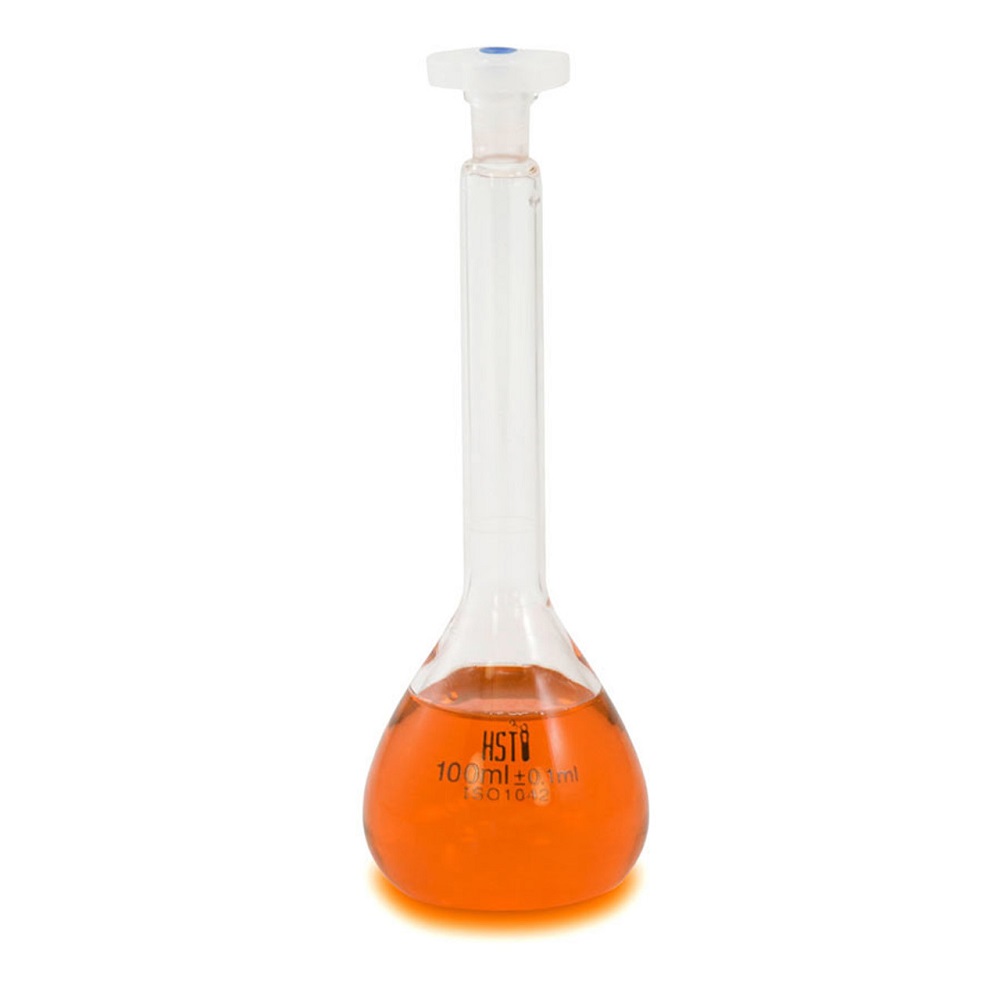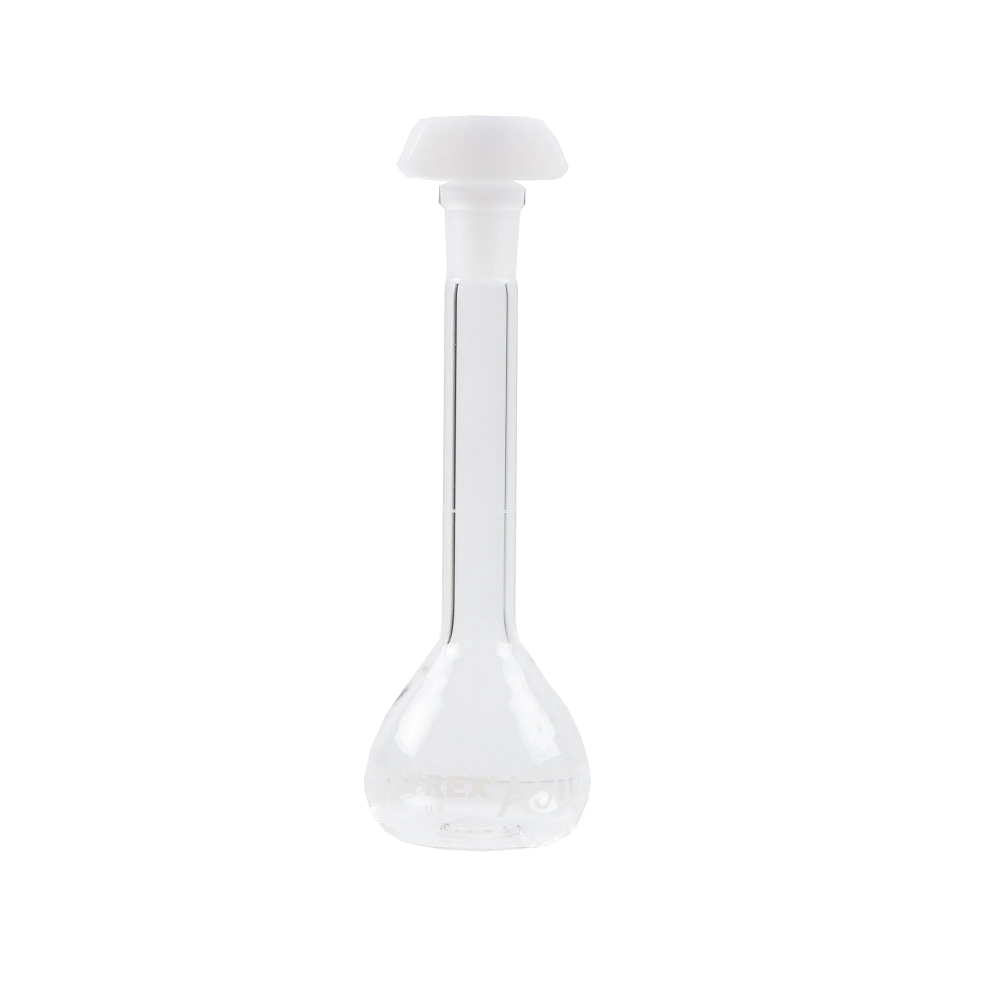In laboratory settings, precision is vital, particularly when measuring liquids for experiments. Among the various measuring tools available, the volumetric flask stands out as a crucial instrument for achieving accurate measurements. This article will explore the functionality and importance of the volumetric flask, its design features, how to use it correctly, and why it remains indispensable in scientific research and education. By understanding this essential laboratory tool, researchers and students alike can improve their measurement accuracy and results in various applications.
What is a Volumetric Flask?
Definition and Purpose
A volumetric flask is a glass or plastic container shaped like an elongated pear with a flat bottom, typically equipped with a precision ground glass stopper. It is specifically designed for making accurate dilutions and preparing standard solutions to a known volume. Unlike other laboratory measuring instruments, such as graduated cylinders, volumetric flasks are made to measure a single specific volume with high accuracy. This feature makes them essential in chemistry and biology labs, where precision can significantly influence experimental outcomes.
Varieties and Sizes
Volumetric flasks come in various sizes, with common volumes ranging from 10 mL to 2000 mL. Users should select a flask size that corresponds to their experimental needs. Each size flask is calibrated to contain a specific volume of liquid when filled to its marked line. Variations may also exist in material, with some flasks made of borosilicate glass for high thermal resistance. Understanding the different types available will help users choose the right flask for their experiments.

Key Features of a Volumetric Flask
Calibration Marks
One of the defining features of a volumetric flask is the graduation mark around its neck, precisely indicating the volume of liquid it holds when filled to that line. This primary reference point allows for accurate filling, which is vital when preparing solutions that require specific concentrations. The design reduces the likelihood of measurement errors during experiments, as a clear line indicates the desired fill level. Properly reading these calibration marks is essential for consistent results across various experiments.
Shape and Design
The volumetric flask’s unique shape contributes to its functionality. Its bulbous body allows for the thorough mixing of liquids, ensuring that solutes dissolve uniformly. The narrow neck helps minimize evaporation during experiments, particularly when dealing with volatile liquids. Furthermore, the flat bottom of the flask allows it to sit securely on the lab bench, reducing the risk of accidents due to tipping. Understanding the flask’s design helps users appreciate how it contributes to accurate measurements and safe handling.
How to Use a Volumetric Flask
Preparing the Flask
Before using a volumetric flask, ensure that it is clean and free from contaminants that could affect measurements. If necessary, rinse the flask with distilled water and allow it to dry. In some cases, users might need to rinse it with the solution to be prepared. This step is especially important for volumetric flasks used for precise dilution, as cleanliness impacts the concentration of final solutions.
Filling to the Mark
When using a volumetric flask, careful filling is crucial. Begin by adding the desired volume of liquid slowly, ensuring you do not exceed the calibration mark. It is essential to fill the flask up to the mark at eye level to achieve the most accurate measurement. Avoid the temptation to overfill or approximate; precision is key here. After achieving the correct fill level, the flask should have a stopper placed securely in its neck to prevent evaporation or contamination.

Applications in the Laboratory
Preparing Solutions
Volumetric flasks play a vital role in preparing standard solutions, which require exact concentrations for accurate experimental results. Chemists use them to create diluted solutions from concentrated stock solutions. For example, preparing a 1 M solution requires knowing the volume of solute and solvent to achieve a desired molarity. The volumetric flask allows for precision in these measurements, which is crucial in experimental chemistry.
Quality Control
In industries like pharmaceuticals and food production, volumetric flasks are essential for quality control. Accurate measurements ensure that the ingredients adhere to safety and quality standards. Using volumetric flasks in these environments helps prevent costly mistakes and ensures product consistency. For instance, improper concentrations could lead to ineffective pharmaceuticals or unsafe food products, making the accuracy of volumetric flasks incredibly important in these applications.
Important Considerations
Temperature Effects
Temperature can affect the volume of liquids, which is a crucial element to consider when using volumetric flasks. Most flasks are calibrated at a specific temperature, often at 20°C (68°F). If the liquid’s temperature falls significantly above or below this point, users may face measurement inaccuracies due to thermal expansion or contraction. Therefore, it is good practice to ensure that liquids are near the calibration temperature for precision.
Choosing the Right Flask
Selecting the appropriate flask size is crucial for achieving accurate measurements. Using a flask that is too large for the volume needed can lead to inaccuracies, while attempting to use a flask that is too small can result in overflow and potential spills. Laboratory users should carefully consider the amount of solution required before deciding on the size of the volumetric flask they will use.
Care and Maintenance
Proper Cleaning Techniques
Like all laboratory equipment, volumetric flasks require proper care and cleaning. After each use, it is important to clean the flask thoroughly to prevent cross-contamination. Rinse the flask with distilled water and consider using a mild detergent for stubborn residues. Avoid using abrasive scrubbers that can scratch the glass surface, which may affect its accuracy during future measurements. Proper maintenance prolongs the life of volumetric flasks and ensures consistent measurement accuracy.
Inspection for Damage
Regularly inspect volumetric flasks for any signs of wear, damage, or scratches. Damage can compromise the flask’s precision, and any cracks or chips may cause leaks during measurement or mixing. If a flask appears compromised, it is wise to replace it rather than risk inaccuracies in experiments. An undamaged flask is crucial for maintaining the integrity of laboratory measurements.

Future Developments in Laboratory Measurement Tools
Innovations on the Horizon
As technology advances, the field of laboratory measurements continues to evolve. Developments in digital technology, for instance, are leading to the creation of smart volumetric flasks equipped with sensors that can automatically record and display measurements. These smart devices can connect to laboratory management software, enabling real-time data tracking. Such innovations may simplify the process of preparing solutions, reducing the chances of human error and enhancing overall laboratory efficiency.
The Role of Artificial Intelligence
Moreover, the integration of artificial intelligence (AI) in laboratory equipment is becoming a reality. With AI, smart volumetric flasks could analyze user patterns and suggest optimal protocols for solution preparation based on experiment needs. For example, AI could predict the best dilution techniques or recommend flask sizes based on historical data and current experiments. This seamless interplay of technology not only has the potential to enhance measurement accuracy but also streamlines the workflow, allowing scientists to focus more on analysis and discovery rather than mundane tasks.
The Value of Precision
In the world of scientific research and education, precision is paramount. The volumetric flask, with its specialized design and unique features, plays an essential role in achieving accurate liquid measurements. By understanding its function, application, and proper handling techniques, laboratory users can significantly enhance their experimental outcomes. Choosing the right flask, adhering to careful filling instructions, and maintaining cleanliness ensures users achieve reliable results across various scientific applications.
As both students and seasoned professionals navigate the complexities of measurements in chemistry, biology, and other fields, mastering the use of the volumetric flask becomes vital. This seemingly simple tool is anything but; it embodies the standard of precision that laboratory work demands. By valuing and utilizing quality measurement techniques, practitioners can elevate their scientific endeavors, ensuring their contributions to research, academia, and industry remain meaningful and impactful. Understanding the volumetric flask is not just about using a tool but about embracing a commitment to accuracy in science, ultimately leading to better experiments and more reliable results.
